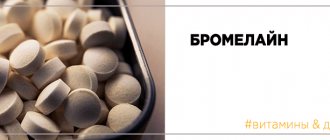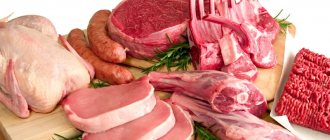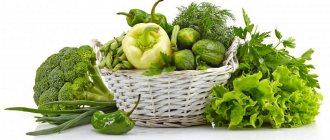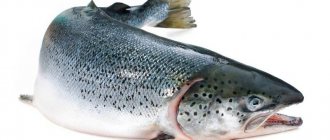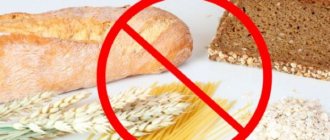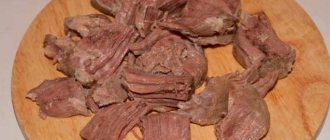Daily protein intake
Nutritionists recommend consuming 1 gram of protein per kilogram of weight for people who do not engage in sports or physical labor. This amount is enough to cover the protein needs of both men and women.
If you lead an active lifestyle and play sports, you need to increase your protein intake. The more intensely you train, the more of these foods you need to consume. For example, for those who engage in strength training, the daily protein intake is 1.3-1.6 grams per kilogram of body weight.
If your training goal is to reduce the percentage of body fat, in other words, to lose weight, then you need to consume 1.6-2 grams of protein per kilogram of weight. This will allow the body to maintain muscle while in a calorie deficit. Then weight loss will occur due to the loss of fat tissue, and not due to muscle burning.
A little about proteins
Proteins are high molecular weight organic substances. They consist of different amino acids, which are combined in different ways. There are more than 5 million different proteins in the human body.
A person cannot live without consuming protein, since this substance is involved in all vital processes. It contains 22 amino acids. About half of them the body cannot produce on its own. He is also unable to do without them.
Main functions:
- regeneration of cells and tissues;
- they are an integral part of enzymes;
- normalization of hormonal levels;
- protecting the body from infections and external irritants;
- providing access to blood cells of oxygen, vitamins, etc.
Foods rich in protein and fiber are foods of animal and plant origin. Proteins are found in meat, fish, eggs, milk, cheese, cereals, etc. Fiber is found in vegetables, fruits and herbs. This substance is not absorbed by the body and, when consumed in large quantities, leads to intestinal problems.
Types of proteins
There are 2 types of protein products:
- Animals. They are quickly absorbed, but during a diet they should be consumed in moderation due to their high fat content. During fasting days, you can eat lean meat: chicken, turkey, rabbit. It is better to avoid pork and lamb. Dairy products are allowed, but only low-fat.
- Vegetable. They are absorbed much more slowly. But they are optimal for any diet, because they are low in calories.
They should be consumed in a balanced manner, since an excess or deficiency of these substances in the body can negatively affect health.
Top 10 High Protein Foods
There are foods that contain a lot of protein, but they are difficult to include in the diet: for example, 100 grams of milk powder contains 33 grams of protein. But we cannot eat milk powder in such quantities, if only because health problems will arise.
That's why we've compiled a list of foods that are high in protein and can be eaten regularly. We give the amount of protein per 100 grams of product.
- Cheese – from 20 to 32 grams
- Chicken or turkey breast – 29 to 31 grams
- Cottage cheese – from 18 to 23 grams
- Legumes (lentils, peas, beans, chickpeas, peanuts) – from 20 to 23 grams
- Red meat (beef) – 21 grams
- Fish – from 14 to 21 grams
- Nuts (cashews, walnuts, pistachios) – from 15 to 21 grams
- Cereals (oats, buckwheat, millet) – from 10 to 15 grams
- Durum wheat pasta – 13 grams
- Egg – 13 grams
An additional source of protein is whey protein. They should not replace your regular diet, but if the food you eat does not provide the required amount, then a protein supplement may help.
Plant foods that are high in protein
Beans
20 g per glass
Heart-healthy beans are a fantastic cheap vegetarian source of protein. Of all the legumes, beans are most often found in the form of canned food. It contains a lot of fiber, which plays an important role in proper nutrition.
Bean puree with garlic and lemon is a good analogue to the usual hummus.
Dried lentils
13 g per 1/4 cup
Cheap dried lentils will help boost your protein, fiber and a range of essential minerals. What distinguishes lentils from other legumes is that they do not need to be soaked for a long time and tediously. It is enough to simmer it for about 20 minutes over low heat until softened. For a balanced lunch, combine cooked lentils with chopped chicken breast, chopped vegetables and lemon vinaigrette.
Peanut butter
8 g per 2 tbsp. spoons
Although peanut butter is not the most popular among nut butters, like almond butter, for example, it is the leader in terms of protein content. However, be sure to check labels for added sugar. The ideal option would be natural oil made from only peanuts. Some stores may allow you to grind your own nuts to suit your taste.
If you're trying to control your weight, look for powdered peanut butter. It is also rich in protein, but less fat. You can even add it to baked goods.
Nut mixes
6 g per 57 g serving
With nuts (peanuts, cashews and almonds), you can easily enrich your diet with protein and healthy unsaturated fats. Keep a pack of assorted nuts in your glove compartment just in case you get hungry. To reduce your sodium intake, look for packages labeled "unsalted."
Bean chips
4 g per 28 g serving
When you're looking for some crunch in your chips, you won't find a better option than protein-rich black bean chips. Plus, they can be dipped in Greek yogurt.
Tofu
12 g per 85 g serving
If you decide not to eat meat, tofu will provide you with soy protein. Firm tofu slices can be cooked using the stir-fry method. They can also be grilled to give the cheese a smoky flavor. A good marinade makes all the difference. You can even add tofu to your smoothie instead of protein powder.
Edamame
8 g per half cup
Another great vegetarian product. These nutritious green soybeans will fill your diet with plant-based protein, fiber, vitamins and minerals. To keep edamame from becoming boring, you can cook shelled frozen beans according to the package recipe, using lemon juice, paprika and salt as seasoning.
Green pea
7 g per glass
High-protein vegetables can be hard to come by, but green peas have enough protein to make you want to keep them in your freezer at all times. Peas also contain a lot of fiber, which can help control weight and curb cravings for junk food.
wheat sprouts
6 g per 28 g serving
A grain of wheat has three components: the kernel, the bran and the germ. The latter has the highest nutritional value and is rich in plant protein. This is a great protein addition to oatmeal, pancakes and even shakes.
Soba noodles
12 g per 85 g serving
These Japanese rye noodles are the best protein alternative to any wheat pasta, so don't hesitate to choose them when you want to have a pasta night. Moreover, these noodles cook in half the time of regular whole grain wheat pasta. To remove excess starch that makes the noodles sticky, rinse them after draining them in a colander.
Proper distribution of protein foods throughout the day
There is an opinion that protein intake should be distributed evenly throughout the day, supposedly our stomach is not able to process more than 30 grams of protein at a time. However, scientists tend to argue that the situation with proteins is the same as with calories: it doesn’t matter what parts you consumed, the total daily volume is important.
This is how absorption happens. When a protein enters the stomach, under the influence of gastric juice it breaks down into its components - amino acids, or into peptides - compounds of amino acids. Next, the amino acids enter the intestines, where they are absorbed and transported into the blood. It is the rate of movement of amino acids into the blood that is the limiting factor in protein absorption.
But in such cases, the body uses a tool that regulates the speed of digestion - the hormone cholecystokinin. When there are more nutrients in the stomach than the intestines can absorb, this hormone is released. Digestion slows down and all protein is absorbed.
Therefore, you can safely eat all the protein at one time and not worry that it will not be absorbed. It is recommended to consume food in a mode in which you are comfortable: whether it is 5 meals a day or one. All that matters is compliance with the daily requirement, as well as the calorie intake, if your nutrition plan is aimed at changing weight.
Calculate how many calories you need to eat per day. We have made a convenient calculator
Protein is an important nutrient that needs to be monitored if you want to maintain and develop muscle mass and if your goal is to lose weight. To consume a lot of protein, you need to remember about familiar and easy-to-eat high-protein foods and try to include them in your daily diet.
Why is protein so important?
The amino acids that make up the substance are necessary for:
- cell restoration;
- building muscle tissue;
- maintaining hair, nails and skin in a healthy condition.
Protein nutrition is especially important for:
- children, since their bodies are constantly growing;
- pregnant women, because with a lack of protein nutrition, fetal development slows down;
- athletes and people who go to the gym, since such a diet promotes the growth of muscle mass.
You need to consume 2 g of protein per 1 kg of body weight per day. These products should make up 40% of the total food. The main supplier is food of animal origin.
Pros of protein nutrition
A protein-rich diet is popular due to its effectiveness. Protein, even if it comes in excess, is not converted into fat, but is excreted from the body. Therefore, such products form the basis of the diet, and carbohydrates and fats are kept to a minimum.
The advantages of this diet include:
- Weight loss. The body takes energy by breaking down fats accumulated in the body.
- No feeling of hunger, because protein foods are filling.
- Improved appearance: healthy hair and nails.
- Positive effect on muscle tissue.
Despite all the usefulness of protein products, the diet should not consist entirely of them.
Protein content in meat
Meat is a source of protein that is of animal origin, which means it contains a set of essential amino acids.
| Type of meat | Content per 100 grams, in grams |
| Beef (tenderloin) | 24 |
| Chicken (breast) | 31 |
| Turkey (breast) | 29 |
| Pork (tenderloin) | 26 |
| Lamb meat | 25 |
| Rabbit meat | 21 |
Protein content in fish
Fish is a good source of protein and can completely replace meat if you don't like it. In addition, red fish contains vitamin D.
| Fish | Content per 100 grams, in grams |
| Tuna | 24,4 |
| Pink salmon | 20,5 |
| Salmon | 20 |
| Herring | 19,1 |
| Halibut | 18,9 |
| Mackerel | 18 |
Protein content of dairy products
Any dairy product is a source of protein and essential amino acids.
| Product | Content per 100 grams, in grams |
| Parmesan cheese | 35 |
| Cheese "Russian" 50% fat | 23 |
| Low-fat cottage cheese | 22 |
| Cottage cheese 9% fat | 18 |
| Milk 2.5% fat | 2,9 |
| Yogurt 6% fat | 5 |
Animal sources
Meat and meat by-products are a quick way to obtain a spectrum of amino acids. It is animal protein that has the maximum fitness developed during evolution. This happened due to the constant presence of animals near people. Meat products often require long-term preliminary cooking - the protein is pre-split and becomes prepared for rapid absorption.
Of animal products, the maximum amount of protein contains:
- fish and seafood - tuna, hake, cod, shrimp, oysters, squid, etc. Sometimes up to 30 grams of macronutrients per 100 grams of weight;
- poultry - turkey, chicken;
- meat - beef, veal, pork, rabbit, lamb;
- offal - liver, heart, kidneys.
Proteins from meat
Meat products were not at the top of the rankings. However, they occupy average values ranging from 15-21 grams per 100 grams. Which is a much narrower range than that of plant foods. The different types of meat are arranged as follows:
| Source | Amount of component per 100 grams of wet weight |
| Turkey | 21,5 |
| Rabbit | 21,1 |
| Chicken | 21 |
| Mutton | 20 |
| Veal | 19,7 |
| Beef | 18,9 |
| Pork liver | 18,8 |
| Chickens | 18,7 |
| Beef liver | 17,4 |
| Pork kidneys | 16,7 |
It is worth noting that poultry meat has a much lower calorie content due to its lower fat content. In contrast, pork is extremely fatty – up to 25 grams.
Average content of important amino acids in meat:
- Tryptophan - 0.26;
- Lysine - 1.62;
- Phenylalanine - 1.65;
- Methionine - 0.86;
- Leucine - 2.40;
- Greonine - 0.86;
- Valine - 0.70;
- Arginine - 1.08;
- Histidine - 0.60;
- Isoleucine - 0.70.
From fish and seafood
Another high protein source is seafood. The benefit of fish and seafood consists of a greater amount of fat-soluble acids. Such acids are necessary for a person to maintain full functioning. Product rating:
| Source | Amount per 100 grams wet weight |
| Sturgeon caviar | 28,9 |
| Red caviar | 23,6 |
| Tuna | 22,7 |
| Chum salmon | 22 |
| Pink salmon | 21 |
| Shrimps | 20,9 |
| Salmon | 20,8 |
| Saira | 20,4 |
| Halibut | 18,9 |
| Squid | 18 |
Dairy sources
The milk itself contains a small amount of protein. The concentration is greater in derivatives - dairy products, when the cooking process is associated with the evaporation of excess moisture.
List of products containing milk proteins in descending order:
| Source | Amount per 100 grams wet weight |
| Cheese | 23-27 |
| Cottage cheese | 22 |
| Low-fat cottage cheese (5% and below) | 18 |
| Brynza | 17,5 |
| Kefir | 3 |
| Milk | 2,5 |
Cereals
The leaders among cereals in terms of macronutrient content are peas and chickpeas. One of the non-legume grains that is popular on the table is buckwheat. Conventional cereals contain a large amount of amino acids, especially when compared with milk:
| Source | Amount per 100 grams wet weight |
| Peas | 23 |
| Beans | 22 |
| Buckwheat core | 12,6 |
| Millet | 12 |
| Oatmeal | 11,5 |
| Wheat | 7,5 |
| Rice | 7 |
| Rye | 4,5 |
Protein content of legumes
Legumes are one of the best foods that can provide a source of protein for vegetarians and vegans. But in some cases, legumes can be harmful - for people with gastrointestinal diseases, gout and allergies to legumes.
| Legumes | Content per 100 grams, in grams |
| Soybeans | 36 |
| Red beans | 24 |
| Mash | 24 |
| Green lentils | 22 |
| Peas | 20 |
| Chickpeas | 19 |
What are the benefits of protein?
In the scientific community, high-molecular organic compounds, which we simply call proteins, bear the proud title of guardians and organizers of life. And this is not without reason. Once in the stomach with food, they are broken down into amino acids, which immediately begin to take an active part in the physiological processes of the body:
- participate in the production of hormones;
- ensure blood clotting;
- regulate the functioning of the nervous system (lack of protein affects coordination);
- affect the activity of the kidneys and liver;
- the delivery of nutrients to cells is also controlled by protein;
- without it, neither the restoration of old tissues nor the growth and construction of new ones is possible - including muscles;
- it provides the body with energy;
- Some proteins act as antibodies, resisting various diseases and strengthening the immune system.
Don’t think that proteins are exclusively meat and cottage cheese!
The body is able to synthesize some amino acids itself. But this part is small, so our body cannot do without regular replenishment of its reserves from the outside. And you can’t do without a list of high-protein foods, which you should print out and hang on the refrigerator, or better yet, memorize it - you’ll have to refer to it often.
Protein content of nuts
Nuts are a source of protein and vitamins. They contain vitamins A, B, C, D and E. Read more in our article “Nuts are very healthy. They contain vitamins and fats, make athletes more resilient and help restore muscles.”
| Nuts | Content per 100 grams, in grams |
| Almond | 21 |
| Pistachios | 21 |
| Cashew | 18 |
| Gretsky | 15 |
| Hazelnut | 13 |
Protein content of fruits and vegetables
Any fruit or vegetable is not the richest product in proteins (but vegetables have other benefits - read more here).
| Product | Content per 100 grams, in grams |
| Green peas | 5 |
| Brussels sprouts | 4,8 |
| Kohlrabi cabbage | 2,8 |
| Bananas | 1,5 |
| Oranges | 0,9 |
| Apples | 0,5 |
More about training, nutrition, sports medicine and sports as an activity - in the “Health” section
Subscribe to the Sports.ru telegram channel about health
Photo: pexels.com/Engin Akyurt, Daria Shevtsova; unsplash.com/Maksim Shutov
Top 10: athlete's first assistants
Let's spend a few more minutes on a little clarification. No food on earth consists solely of proteins; it will always contain a certain proportion of fats or carbohydrates, which can significantly slow down progress towards the goal if your goal is not only beautiful relief, but also weight loss. In this case, preference should be given to high-protein foods low in fat and carbohydrates. Subject to regular training, the body will completely use it to build muscle tissue and will not try to store it in the folds of the abdomen.
Knowing the secrets of healthy eating makes it much easier to achieve your goals.
On the other hand, nutritionists say: a small amount of fats and carbohydrates will benefit the absorption of protein. So don’t rush to clear all controversial dishes from the menu, leaving only the highest protein foods without “excesses” among those allowed. Diversity has never harmed anyone, but bigotry often does.
If your goal is weight loss
What to focus on for those who set themselves the task of losing a few kilograms, so that the muscles not only do not suffer, but also continue to increase in size?
1. Fish. It consists of a quarter of protein (100 g of product contains 20-25 g of pure protein), is easily absorbed by the body and is full of polyunsaturated fatty acids that the body needs for normal functioning. It’s difficult to gain weight on fish, but if you’re actively trying to stay slim or are on a cutting diet, choose low-fat varieties—tuna, trout, salmon—and diversify your diet with seafood more often.
Fish can be safely included in any diet
2. Meat. Here, chicken breast remains the undisputed favorite of athletes and healthy eating enthusiasts. Just like fish, it consists of almost a quarter of protein with a minimum of fat and almost complete absence of carbohydrates, especially if you choose skinless chicken fillet. Following chicken is lean beef, rich in iron and zinc, which are important for men, rabbit meat and turkey meat. But pork and lamb let us down: a large amount of animal fat negates the benefits of the product.
Less fat and oil, more spices!
3. Liver. Offal will help diversify meat and fish dishes. Liver, for example, is comparable in protein content to meat, but it contains little fat - even pork contains, at most, 5%.
Don't discount by-products
4. Low-fat cottage cheese. This protein is a long-digesting protein, so it is not recommended to eat it after training in order to close the protein-carbohydrate window. But during the day and in the evening, cottage cheese is always a welcome guest on your plate. Moreover, from every 100 g of product you will receive 15-20 g of protein, which will include calcium, which strengthens bones and relieves muscle cramps.
Sugar is prohibited, but herbs and spices are allowed
If your goal is muscle
For those who want to gain weight, another list of products will come to the rescue.
5. Legumes. This is a real record holder for protein content! Soybeans consist of almost half of it, and peas, beans and lentils, although they lag behind their “relatives”, confidently hold second place - for every 100 g of product there are about 20 g of the purest vegetable protein, which is as close in composition as possible to what found in meat. However, there was a fly in the ointment here: a third of soybeans are fats, and other legumes are full of carbohydrates.
Pea porridge is as filling as mashed potatoes
6. Cheeses. Pleasant taste, 20-35% protein, calcium... What else is required from a product intended for sports nutrition? If cheeses had a little less fat, we would have an ideal source of protein. Alas, fat is sometimes present in equal parts with protein, so use cheese with caution - it will significantly increase the calorie content of the diet.
A slice of cheese, a savory cracker - and your snack is ready.
7. Nuts. A good choice for a snack: filling, healthy and, on average, 20% protein. It’s not for nothing that they are present on the menu of any bodybuilder who is diligently gaining weight. True, the fat in strong kernels is at least twice as much as protein, so you need to eat them with caution.
Peanuts are high in protein, but almonds and walnuts are lower in fat.
8. Eggs. 10-12% protein makes this product an indispensable assistant in gaining weight, but if you are losing weight or are concerned about creating relief, you will have to give up the yolks. There is too much fat concentrated in them - up to 35%.
If you're losing weight, stay away from the yolk
9. Cereals. Buckwheat, oats, rice, millet and barley will serve as a tasty side dish, a valuable source of protein (up to 15%) and will not break the budget. One bad thing is that, even if you wanted to, you cannot classify cereals as high-protein, low-carbohydrate products: in some of them, the amount of these compounds that are dangerous for slimness can reach up to 70%.
Cereals contain not only proteins and carbohydrates, but also minerals
10. Bread. Surprised? Meanwhile, bread contains 5-8% protein, which makes it an important contender for your attention. The main thing is to choose varieties with lower carbohydrate content and more vitamins. Such as rye bread made from wholemeal flour, which can rightfully be called a bodybuilder’s assistant in both weight loss and weight gain.
If you don't get carried away with eating bread, it will only bring benefits
comparison table
For better clarity, we present you a table of high-protein foods indicating the amount of fats and carbohydrates.
